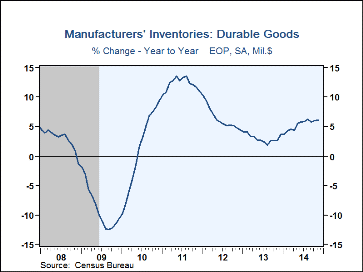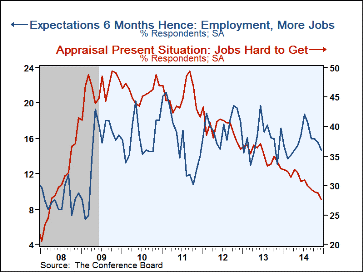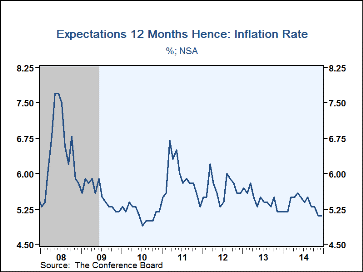 Global| Jan 02 2014
Global| Jan 02 2014U.S. ISM Index Slips M/M Yet Remains Near Recovery High
by:Tom Moeller
|in:Economy in Brief
Summary
Last year closed out with firmness in the factory sector. The Composite Index of Manufacturing Sector Activity from the Institute for Supply Management slipped to 57.0 during December from an unrevised 57.3 in November. Nevertheless, [...]
Last year closed out with firmness in the factory sector. The Composite Index of Manufacturing Sector Activity from the Institute for Supply Management slipped to 57.0 during December from an unrevised 57.3 in November. Nevertheless, the uptrend since a May low of 49.0 remained in place and the full-year reading of 53.9 indicated a fourth straight year of factory sector expansion. The latest reading beat expectations for a decline to 56.7, as measured by the Action Economics Survey. Any figure above 50 indicates an increasing level of activity in the factory sector. During the last ten years, there has been a 74% correlation between the ISM index and the q/q change in real GDP.
A lower reading for inventories (47.0) provided the greatest drag on last month's factory sector activity. That added to a modest easing in the level of production (62.2). Offsetting these declines was improvement both in new orders (64.2) as well as employment (56.9). During the last ten years there has been an 88% correlation between the employment index and the m/m change in factory payrolls. The supplier delivery series (54.7) recovered its November decline. The backlog of orders reading (51.5) retraced its November gain while imports were stable at 55.0.
The prices paid index series indicated slight improvement in pricing power with an uptick to 53.5. Twenty percent of firms raised prices while 13 percent lowered them. During the last ten years there has been a 67% correlation between the index and the m/m change in the intermediate producer price index.
The figures from the Institute For Supply Management (ISM) are diffusion indexes and can be found in Haver's USECON database. The expectations number is in the AS1REPNA database.
| ISM Mfg | Dec | Nov | Oct | Dec'12 | 2013 | 2012 | 2011 |
|---|---|---|---|---|---|---|---|
| Composite Index | 57.0 | 57.3 | 56.4 | 50.2 | 53.9 | 51.7 | 55.2 |
| New Orders | 64.2 | 63.6 | 60.6 | 49.7 | 57.2 | 52.9 | 56.4 |
| Production | 62.2 | 62.8 | 60.8 | 53.1 | 57.9 | 53.6 | 57.4 |
| Employment | 56.9 | 56.5 | 53.2 | 51.9 | 53.3 | 53.8 | 57.4 |
| Supplier Deliveries | 54.7 | 53.2 | 54.7 | 53.7 | 52.0 | 50.0 | 54.7 |
| Inventories | 47.0 | 50.5 | 52.5 | 43.0 | 49.4 | 48.2 | 50.1 |
| Prices Paid Index (NSA) | 53.5 | 52.5 | 55.5 | 55.5 | 53.8 | 53.2 | 65.2 |
Tom Moeller
AuthorMore in Author Profile »Prior to joining Haver Analytics in 2000, Mr. Moeller worked as the Economist at Chancellor Capital Management from 1985 to 1999. There, he developed comprehensive economic forecasts and interpreted economic data for equity and fixed income portfolio managers. Also at Chancellor, Mr. Moeller worked as an equity analyst and was responsible for researching and rating companies in the economically sensitive automobile and housing industries for investment in Chancellor’s equity portfolio. Prior to joining Chancellor, Mr. Moeller was an Economist at Citibank from 1979 to 1984. He also analyzed pricing behavior in the metals industry for the Council on Wage and Price Stability in Washington, D.C. In 1999, Mr. Moeller received the award for most accurate forecast from the Forecasters' Club of New York. From 1990 to 1992 he was President of the New York Association for Business Economists. Mr. Moeller earned an M.B.A. in Finance from Fordham University, where he graduated in 1987. He holds a Bachelor of Arts in Economics from George Washington University.










